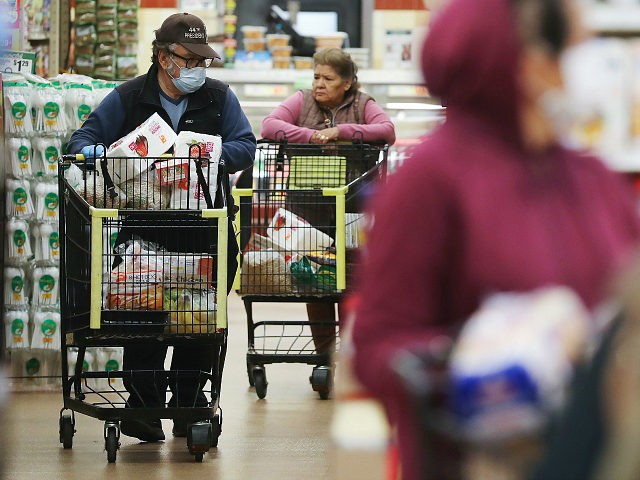An additional 5.9 million people in the United States are on food stamps since the coronavirus pandemic began in March 2020, according to the latest data from the U.S. Department of Agriculture (USDA).
The USDA data showed that in March 2020, the month the pandemic hit the U.S., 37,140,169 individuals were receiving food stamps. Yet in April, that number soared by an estimated 5.9 million to 42,995,224 individuals.
Before the huge spike in enrollment due to the coronavirus, food stamp enrollment had been on a steady downward trend since the beginning of President Donald Trump’s first full month in office — February 2017 — to February 2020, the month before the coronavirus pandemic fully hit the U.S.
The coronavirus pandemic caused people to lose their jobs, causing financial instability and a need for them to go on food stamps to survive.
The government responded by enacting the Families First Coronavirus Response Act to provide temporary assistance to those in need of food and suspending the work requirement for those ages 18 to 49 without children or dependents.
The Act also allowed states to provide emergency Supplemental Nutrition Assistance Program (SNAP) benefits and to provide an additional allotment to all households up to the maximum amount for their household size.
By subscribing, you agree to our terms of use & privacy policy. You will receive email marketing messages from Breitbart News Network to the email you provide. You may unsubscribe at any time.
The act also allowed meal replacement benefits through SNAP for households with children who attend a closed school and would have otherwise received a free or reduced-price meal while at school.
The administrative flexibility has caused a huge boost in SNAP participation, although the USDA has suggested it may start limiting some of these key flexibilities by September.
As of August 6, 16 states and the District of Columbia are eligible for USDA-approved SNAP waivers.

COMMENTS
Please let us know if you're having issues with commenting.